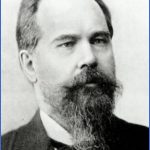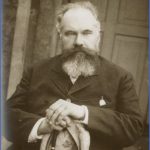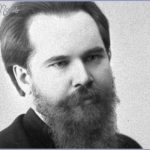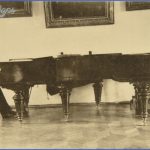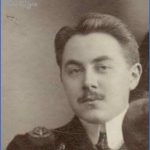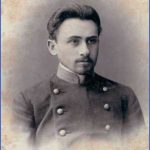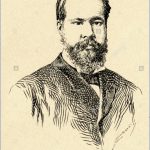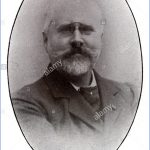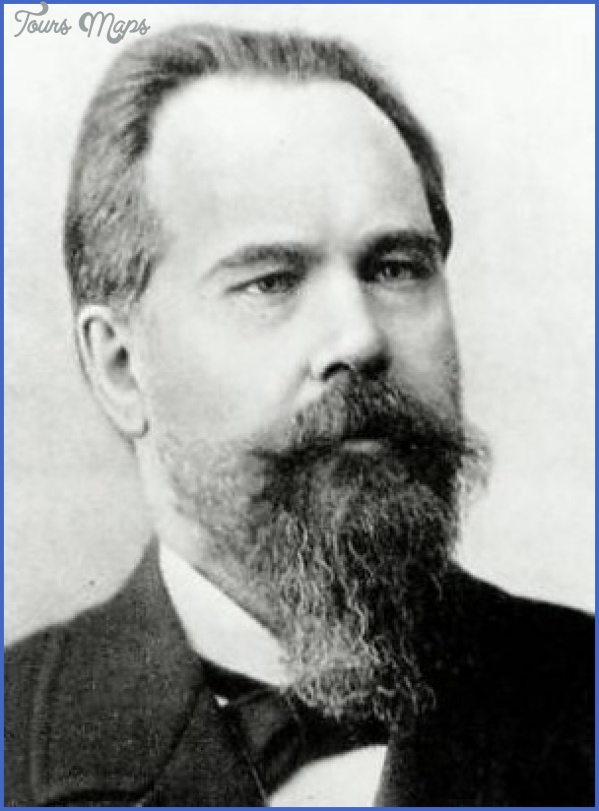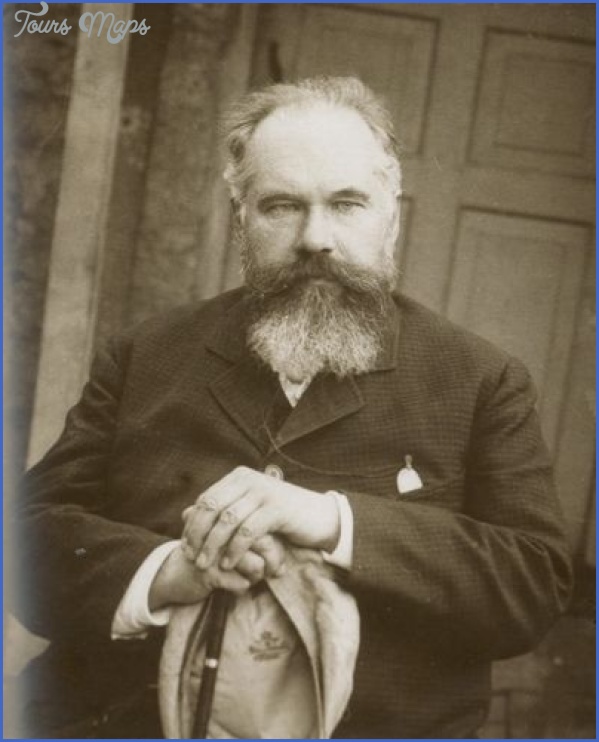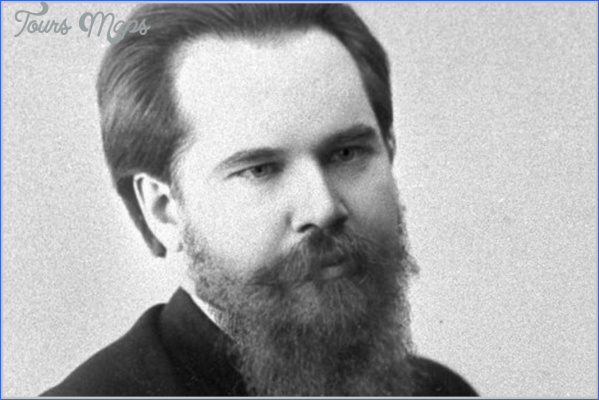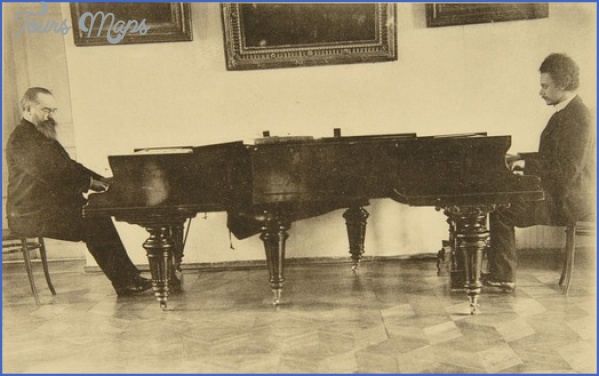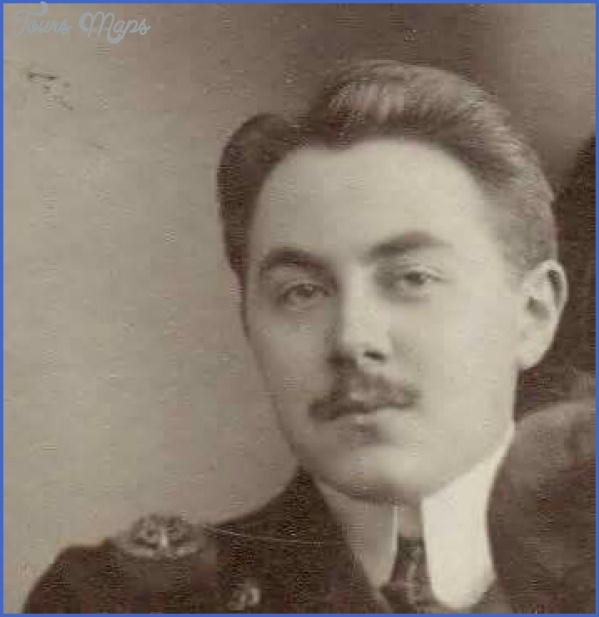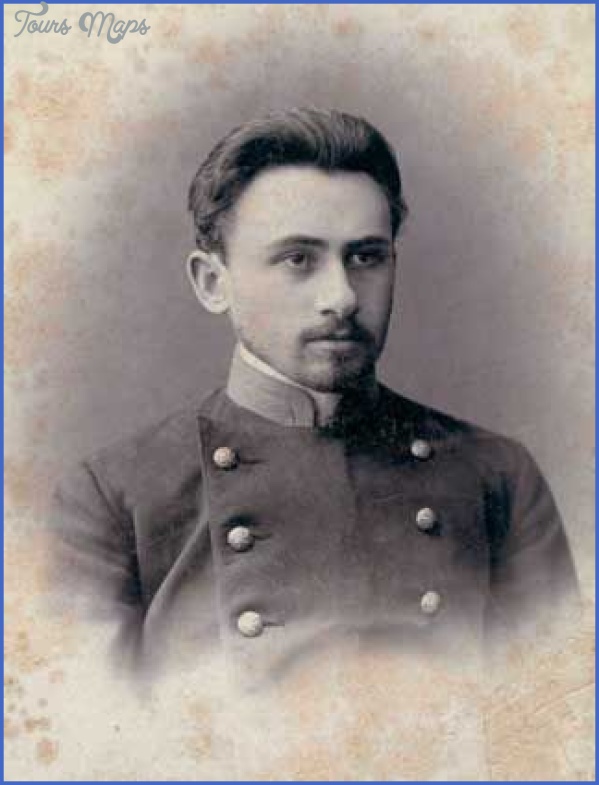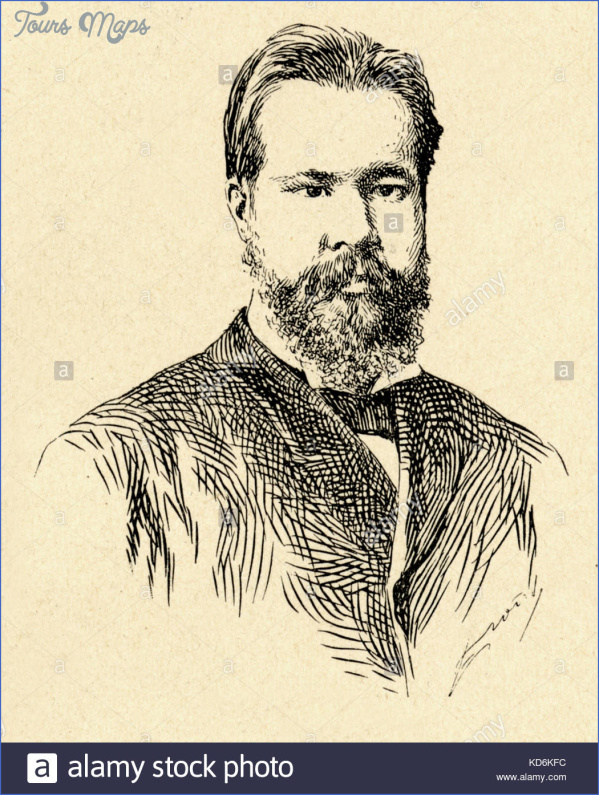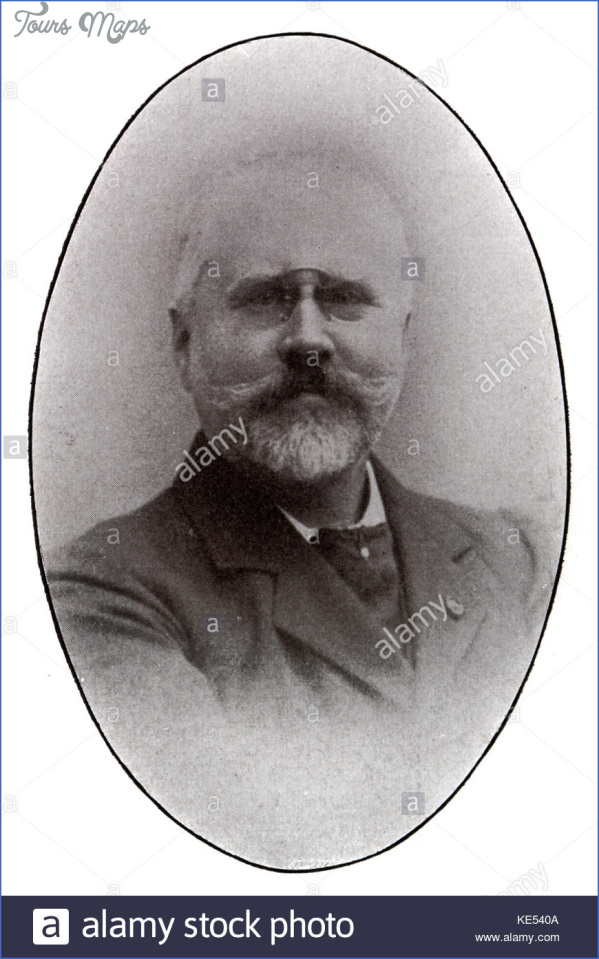TANEYEV MUSEUM
Sergey Ivanovich Taneyev (1856-1915), who for many years was professor of piano and composition at Moscow Conservatory and briefly its director, is quietly commemorated twice near Moscow: about 70 km to the west, in the village where he died, and 90 to the north-west, in an outbuilding attached to Tchaikovsky’s last home in Klin (see Tchaikovsky). For a time (1960-94), according to the memorial plaques, the street in Moscow called Gagarenski pereulok was known as Taneyevikh pereulok because, from 1904 until his death, Taneyev occupied the small cottage there, at no.2. At the age of 19 Taneyev won the first gold medal given for both piano and composition at the Moscow Conservatory under Nikolay Rubinstein and Tchaikovsky (of whose First Piano Concerto he gave the Moscow premiere). He was an important teacher, notably of Skryabin and Rakhmaninov, devoted to his pupils. A natural intellectual, he learnt several languages (including Esperanto, in which he wrote many songs), published a counterpoint textbook (1909) and set himself daily mathematical problems; he was also interested in mysticism and astrology. His home was a gathering place for pupils and friends: the Tuesday evening discussions of controversial new music, including Wagner’s, were famous. As a composer he was retiring and self-critical, and not prolific, although he did produce four symphonies, a piano concerto and chamber music as well as a trilogy opera, Oresteya (1894), and a substantial body of vocal pieces, solo and choral.
In 1906 Taneyev began taking holidays (his elderly nursemaid and his cat, Vaska, in tow) in Dyut’kovo, a small village in the Storozhka river valley, close to the Savvino-Storozhevskiy monastery west of Moscow, five kilometres beyond Zvenigorod, where many Moscow artists and intellectuals retreated in the summer. From 1908 he rented four rooms of a house with a terrace near one occupied by his friend the conductor Bulikov. A grand piano was dispatched from Moscow for teaching and rehearsing; Taneyev took walks in the fir forests and played croquet and drank tea with his pupils and friends. His last visit, in 1915, was delayed by a bout of pneumonia he suffered after attending Skryabin’s funeral. Four days after his arrival in Dyut’kovo, Taneyev had a heart attack and died, on 19 June. He was buried at Zvenigorod but later moved to the Novodyevichi cemetery in Moscow, where he lies near Rubinstein and Skryabin.
The Taneyev museum at Dyut’kovo
For Taneyev’s students, Dyut’kovo remained a place of pilgrimage. It was nearly 50 years after his death, in 1962, that a memorial to him was established in the Bulikov house, since the people from whom Taneyev had rented the house where he died (and whose descendants still own it) refused to allow it to be opened to the public, although they did agree to a memorial plaque. The displays were made up of photographs and the recollections of the village elders. When in 1980 the founder died, the displays were moved to the monastery museum and the house was abandoned. But nine years later, two women who worked in the monastery museum decided to revive it, with the brother of one of them. They renovated the Bulikov house and established contact with Taneyev’s great-great-nephews and surviving pupils, who provided display items and further recollections. The museum is now in the charge of the local authority, but run by devoted staff, who are prepared to walk an hour each way from the nearest bus stop, whatever the weather, to ensure that it is open to visitors. (It isn’t easy to find Dyut’kovo: best to take a taxi from Zvenigorod, or the 23 bus to the monastery; drivers should take the Minsk highway (M1) out of Moscow, or the Riga one (M9), turn right or left respectively on A107, look out for the monastery to the south-west of Zvenigorod and turn right at the well just beyond it.)
TANEYEV MUSEUM Photo Gallery
The village is small, the streets unnamed. The large bust in the front garden is all that advertises the museum. It occupies the entire ground floor of the Bulikov house, which inside resembles a log cabin. In addition to Taneyev family trees, portraits of his grandparents, photographs of his parents and brothers, family furniture and personal effects of family members, there is a chair once used by Tchaikovsky. In the larger back room, which doubles as a display room for furniture from Taneyev’s Moscow house (vignettes of his bedroom, diningroom and study are re-created in different corners) and a hall for live music-making, there are a few personal items: a white summer jacket hangs in a cupboard, with small bodybuilding weights for turning unwanted fat to muscle hidden below, and a pocket watch, a pen and the composer’s calling card are in a small glass case. The displays in the far side of the front room chart not only his time at Dyut’kovo but also his life in Moscow, his friendship with the Tolstoys and his visits to their estate at Yasnaya Polyana, and a supposed romance with a married pianist, Maria Karlovna Benua. There are still many photographs and alongside them editions of his music, a copy of his counterpoint textbook and impressions of the 1895 St Petersburg production of Oresteya. There are two pianos of the period, neither of them directly connected with Taneyev. When Taneyev died, his legacy passed to his elder brother Vladimir, a lawyer with a large country estate at Klin, near the Tchaikovsky house; he and Tchaikovsky were old friends from their college days. In the 1920s he divided the material arbitrarily in two, donating half to the Klin museum and half to the Russian State Archive of Literature and Art in Moscow. The collection included Taneyev’s music library, his manuscripts (the fair copies already in the hands of his Leipzig publisher, Belyayev, were destroyed during World War II), correspondence and other personal papers, and photographs. The Tchaikovsky Archive at Klin has continued to collect Taneyev items and now owns more than 5000, including the manuscripts of Oresteya. Although Taneyev, Tchaikovsky’s favourite student, never visited him at Klin, he came later to help Modest Tchaikovsky sort out his brother’s effects. Vladimir Taneyev’s family estate, a mere 500 metres away, now belongs to the Tchaikovsky Museum and there are plans to create a Taneyev museum there one day, although only the chapel is still standing. In the meantime, the Taneyev items at Klin are displayed in two rooms in a building behind the Tchaikovsky house. In the smaller room there are a few pieces of furniture that belonged to the composer, a fortepiano and an upright, and a selection from his library. The larger one contains neatly organized, modern displays telling the story of his life, illustrated with photographs, manuscripts and editions of his music, as well as fascinating examples of his nonmusical interests referred to earlier. One section is devoted to his pupils, another to his friends and colleagues, a third to his brother’s estate. Visitors to Klin may have to ask specially to see the Taneyev exhibition, which is not always included in tours of the Tchaikovsky house.
Maybe You Like Them Too
- Explore Doncaster, United Kingdom with this detailed map
- Explore Arroyito, Argentina with this Detailed Map
- Explore Belin, Romania with this detailed map
- Explore Almudévar, Spain with this detailed map
- Explore Aguarón, Spain with this detailed map

